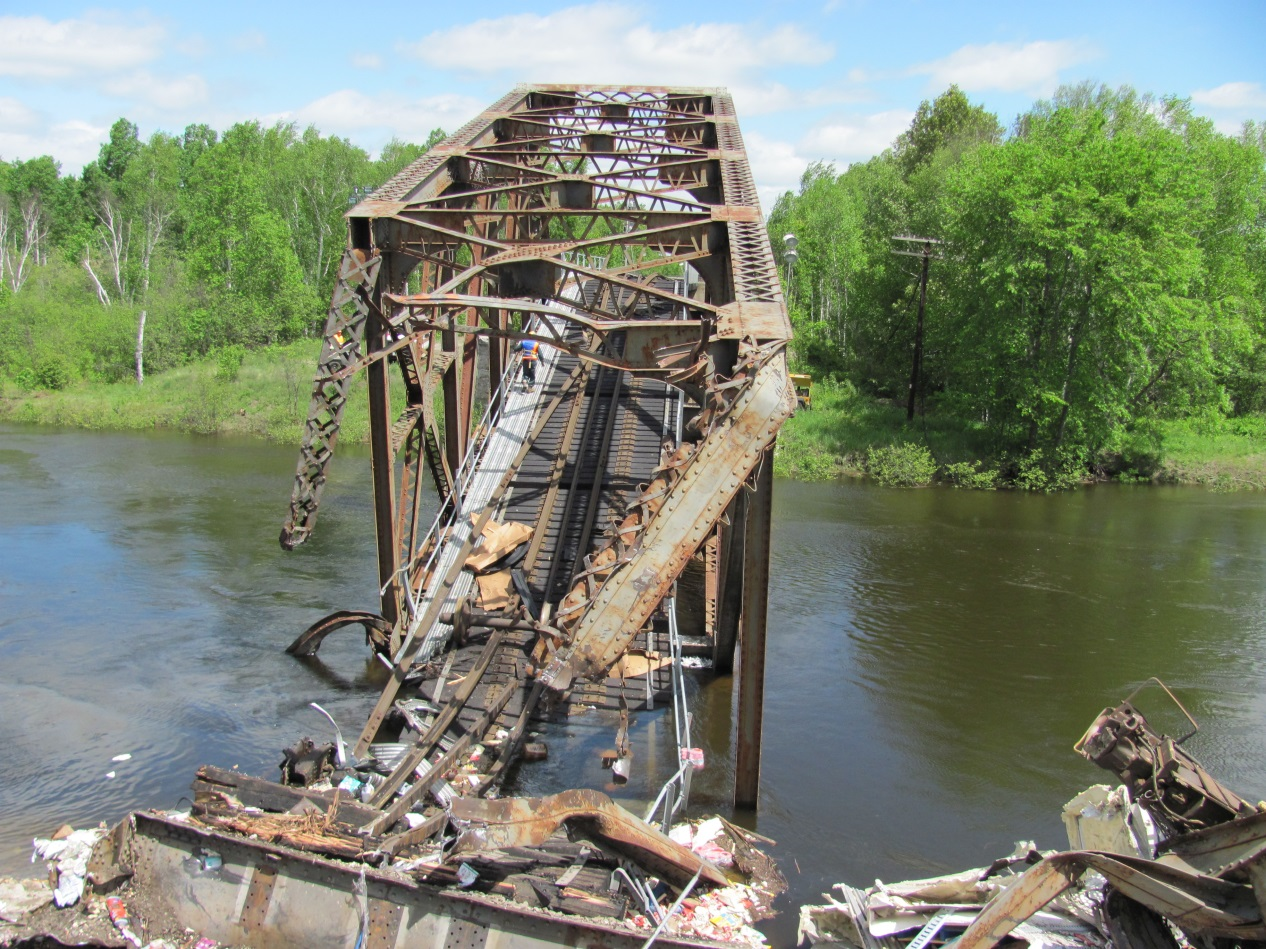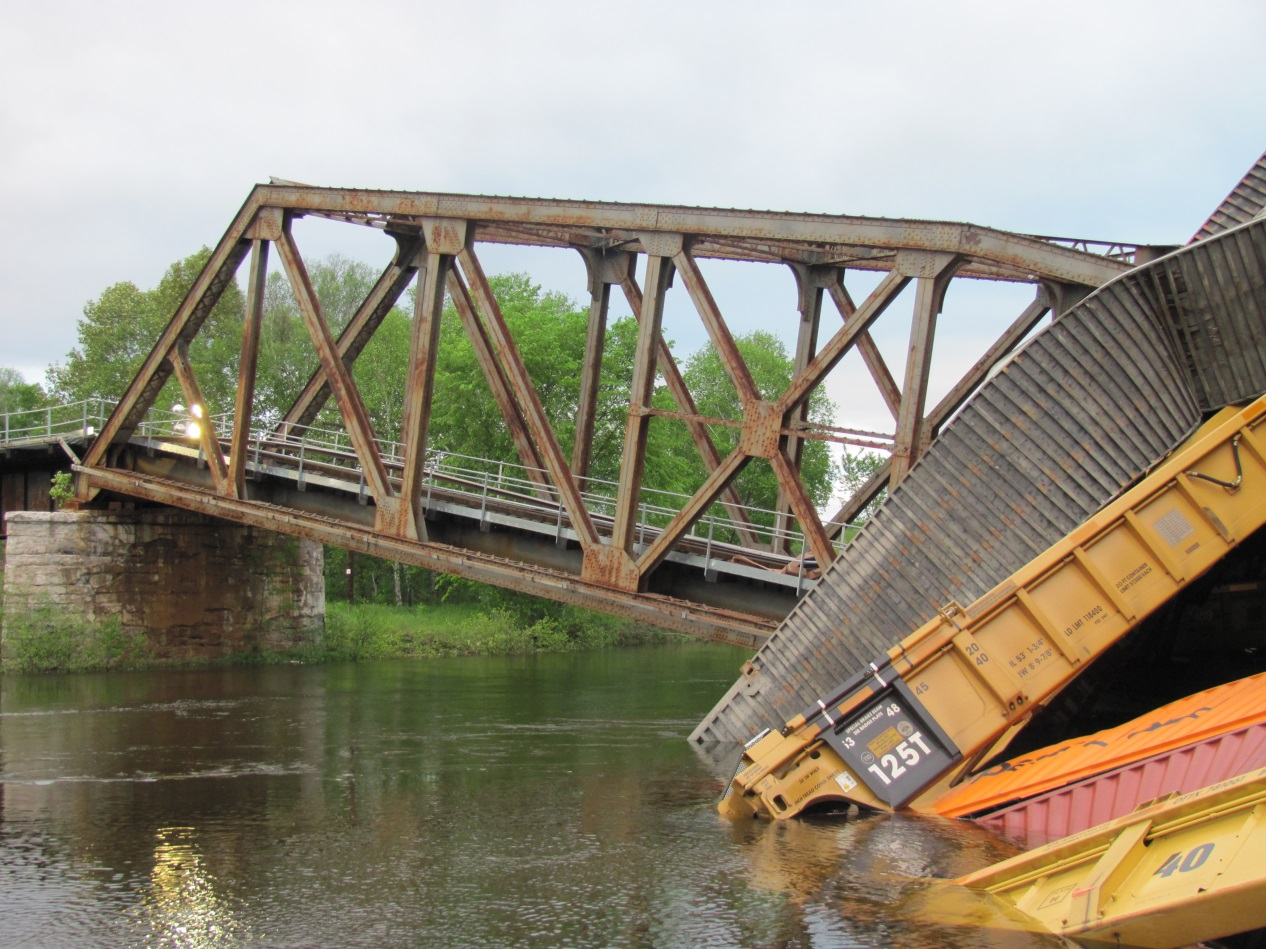Main-track derailment
Canadian Pacific Railway
Freight train 119-01
Mile 112.70, Parry Sound Subdivision
Wanup, Ontario
The occurrence
On 02 June 2013, at about 1000 Eastern Daylight Time, Canadian Pacific Railway freight train 119-01 was proceeding northward at 35 mph when 6 cars (including 12 car bodies and 20 containers) derailed. Some of the derailed cars struck the railway bridge that traversed the Wanapitei River (Mile 112.80 on the Parry Sound Subdivision) near Wanup, Ontario. As a result of the impact, the bridge collapsed and 7 containers, some carrying dangerous goods, fell into the river. Two containers sunk to the bottom of the river and the other 5 containers remained afloat. There were no injuries, and no dangerous goods were released.
Media materials
News releases
Roller bearing failure and subsequent burnt-off axle journal contributed to 2013 derailment near Sudbury, Ontario
Read the news release
Deployment notice
TSB deploys a team to the site of a derailment involving a CP freight train near Banff, Alberta
The Transportation Safety Board of Canada (TSB) is deploying a team of investigators to the site of a derailment involving a Canadian Pacific freight train near Banff, Alberta. The TSB will gather information and assess the occurrence.
Investigation information
Download high-resolution photos from the TSB Flickr page.
Class of investigation
This is a class 3 investigation. These investigations analyze a small number of safety issues, and may result in recommendations. Class 3 investigations are generally completed within 450 days. For more information, see the Policy on Occurrence Classification.
TSB investigation process
There are 3 phases to a TSB investigation
- Field phase: a team of investigators examines the occurrence site and wreckage, interviews witnesses and collects pertinent information.
- Examination and analysis phase: the TSB reviews pertinent records, tests components of the wreckage in the lab, determines the sequence of events and identifies safety deficiencies. When safety deficiencies are suspected or confirmed, the TSB advises the appropriate authority without waiting until publication of the final report.
- Report phase: a confidential draft report is approved by the Board and sent to persons and corporations who are directly concerned by the report. They then have the opportunity to dispute or correct information they believe to be incorrect. The Board considers all representations before approving the final report, which is subsequently released to the public.
For more information, see our Investigation process page.
The TSB is an independent agency that investigates air, marine, pipeline, and rail transportation occurrences. Its sole aim is the advancement of transportation safety. It is not the function of the Board to assign fault or determine civil or criminal liability.

